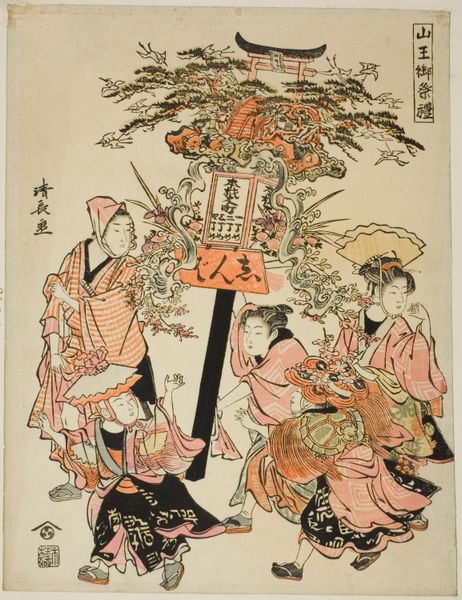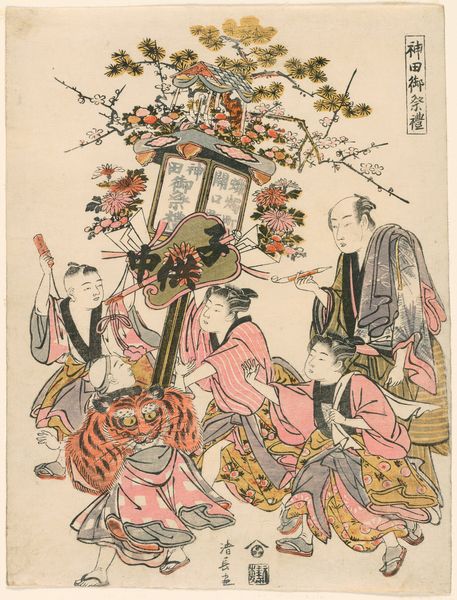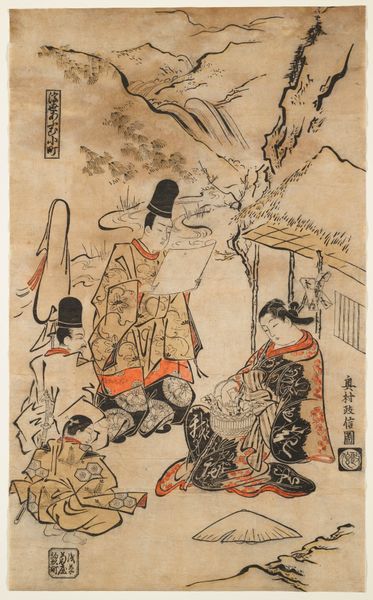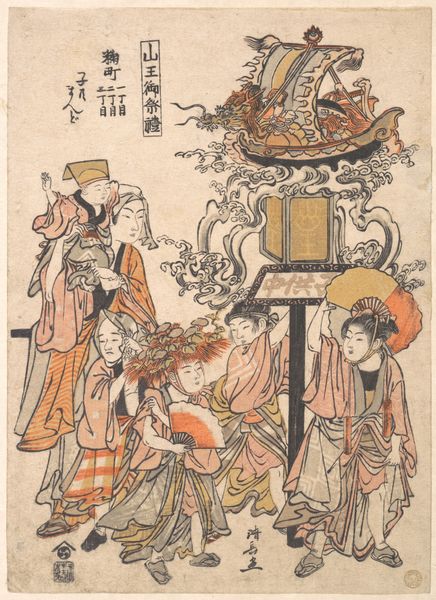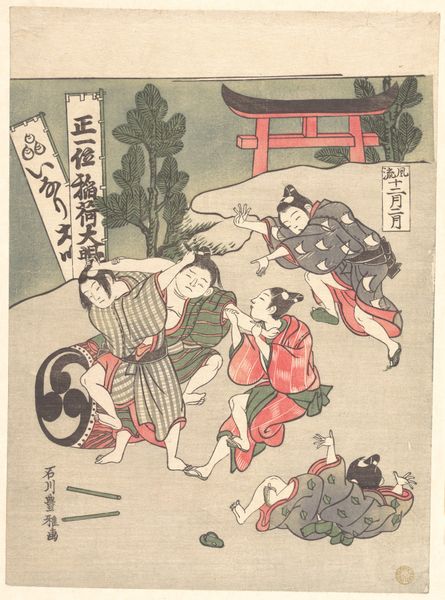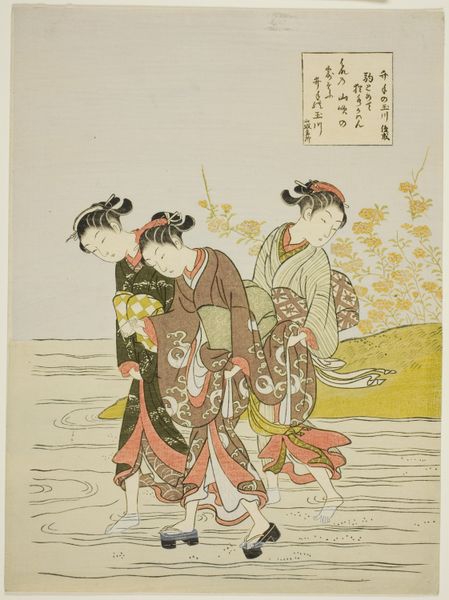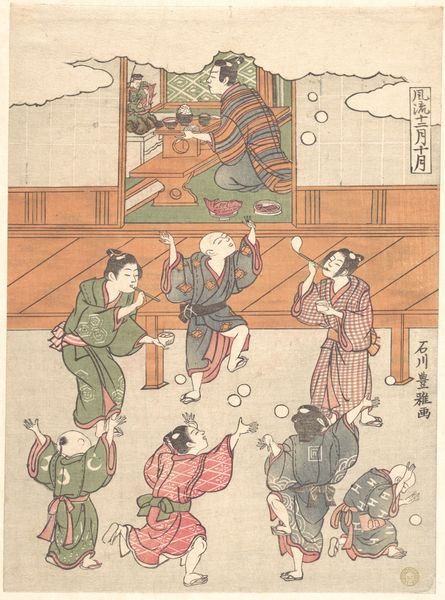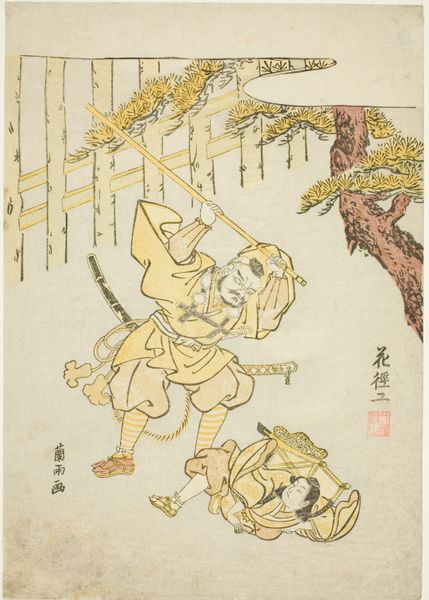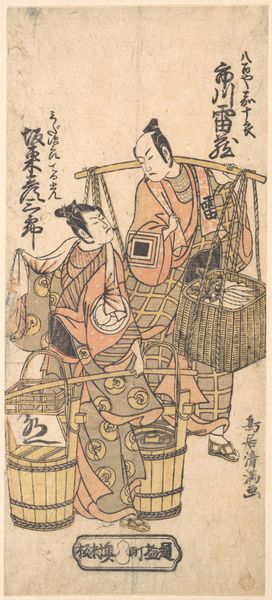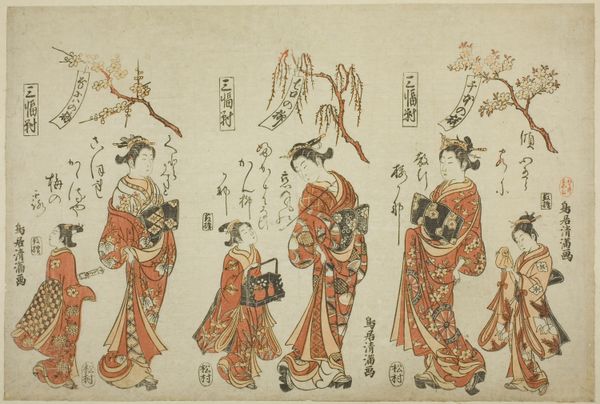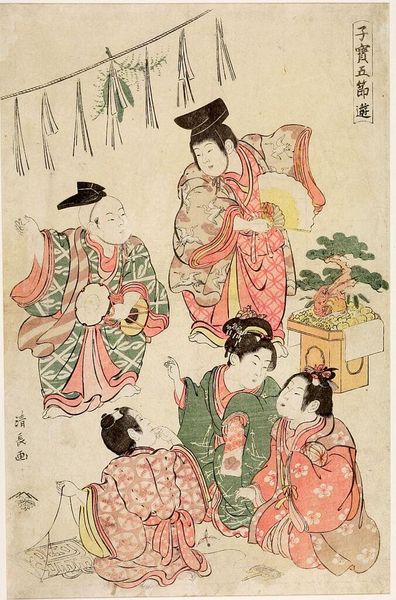
Carrying a Lantern Decorated with the Flowers of the Four Seasons (Hirakawa-cho Yamamoto-cho shiki no hana mando) from the series "The Festival of the Sanno Shrine (Sanno go-sairei)" 1780
0:00
0:00
print, woodblock-print
# print
#
asian-art
#
ukiyo-e
#
figuration
#
woodblock-print
#
genre-painting
Dimensions: 26.2 × 19.7 cm
Copyright: Public Domain
Curator: This lovely woodblock print is titled "Carrying a Lantern Decorated with the Flowers of the Four Seasons" by Torii Kiyonaga, created around 1780. It’s currently part of the Art Institute of Chicago's collection. I find its depiction of a festival procession so evocative of Edo period life. Editor: My first impression is one of lightheartedness, a breezy quality that's heightened by the pastel palette and graceful lines. But what intrigues me most is the materiality—the way Kiyonaga achieves such texture with woodblock printing, a process steeped in both artistry and labor. Curator: Exactly. It portrays a scene from the Sanno Festival, offering a glimpse into the social customs and religious rituals of the time. Notice the intricate details in the women's kimono patterns, each carefully carved into the woodblocks. They offer clues about their social standing and cultural values. Editor: And that magnificent lantern! You can almost feel the weight of it, balanced precariously on their shoulders. It's not just decorative; it’s functional. How many artisans would have been involved in producing this, from the papermakers to the carpenters? It also begs the question, was Kiyonaga commenting on the labor undertaken in such displays of opulence? Curator: I hadn't thought of that. It does invite speculation on who benefits and who pays the price for such displays of cultural pride. But beyond that, this print signifies a period when these urban festivals reflected the prosperity of Edo, and strengthened community ties. Editor: The festival becomes a spectacle, though, consumed by those who could afford it. Woodblock prints like these are material commodities, designed to be circulated. Are we looking at the popularization of festival culture, filtered through the lens of art production? It is printed, bought, sold and shared, for home display, all pointing to class. Curator: You've provided me with a new lens to examine the work. Editor: Likewise, your highlighting of Edo society's appreciation for beautiful crafted art is deeply enlightening!
Comments
No comments
Be the first to comment and join the conversation on the ultimate creative platform.
